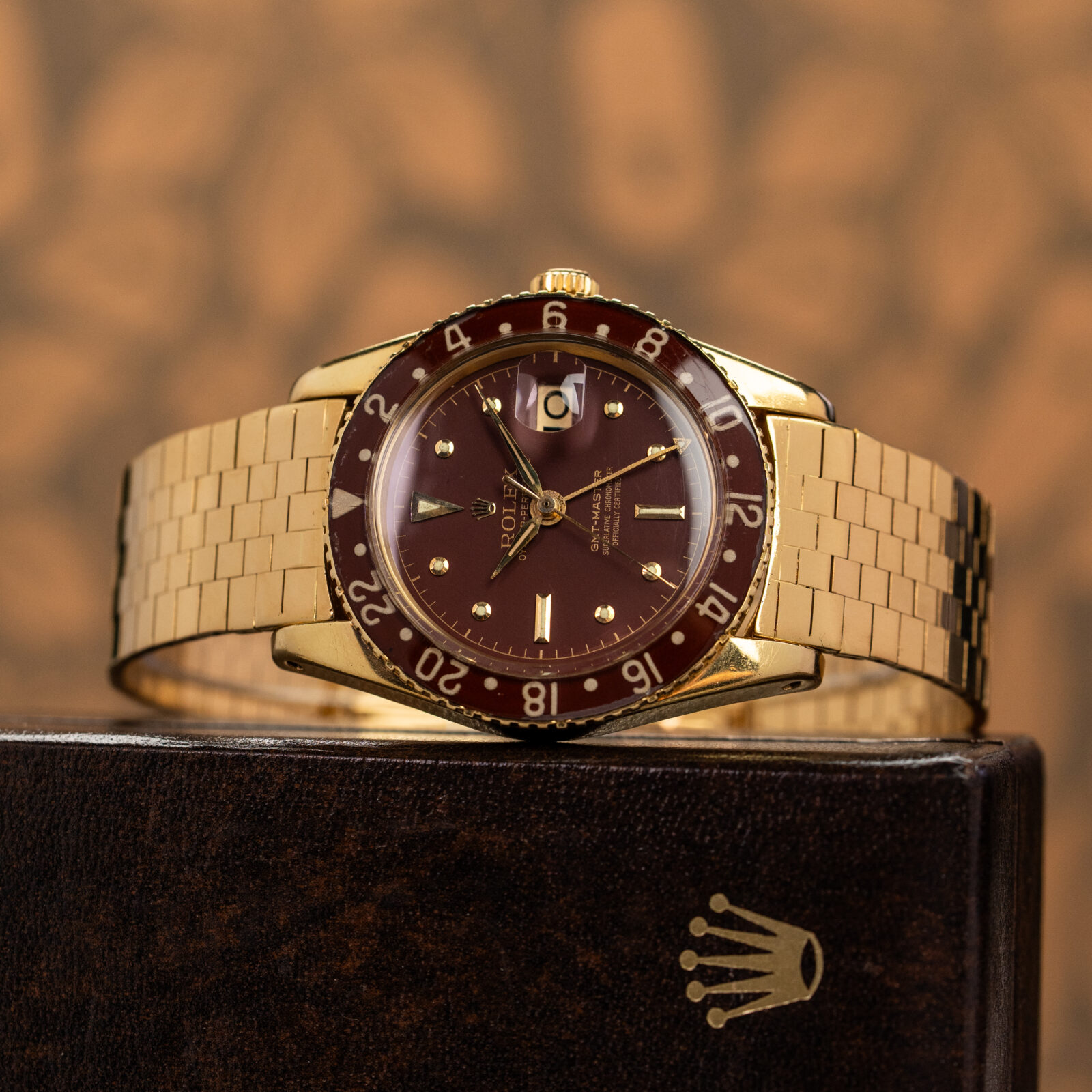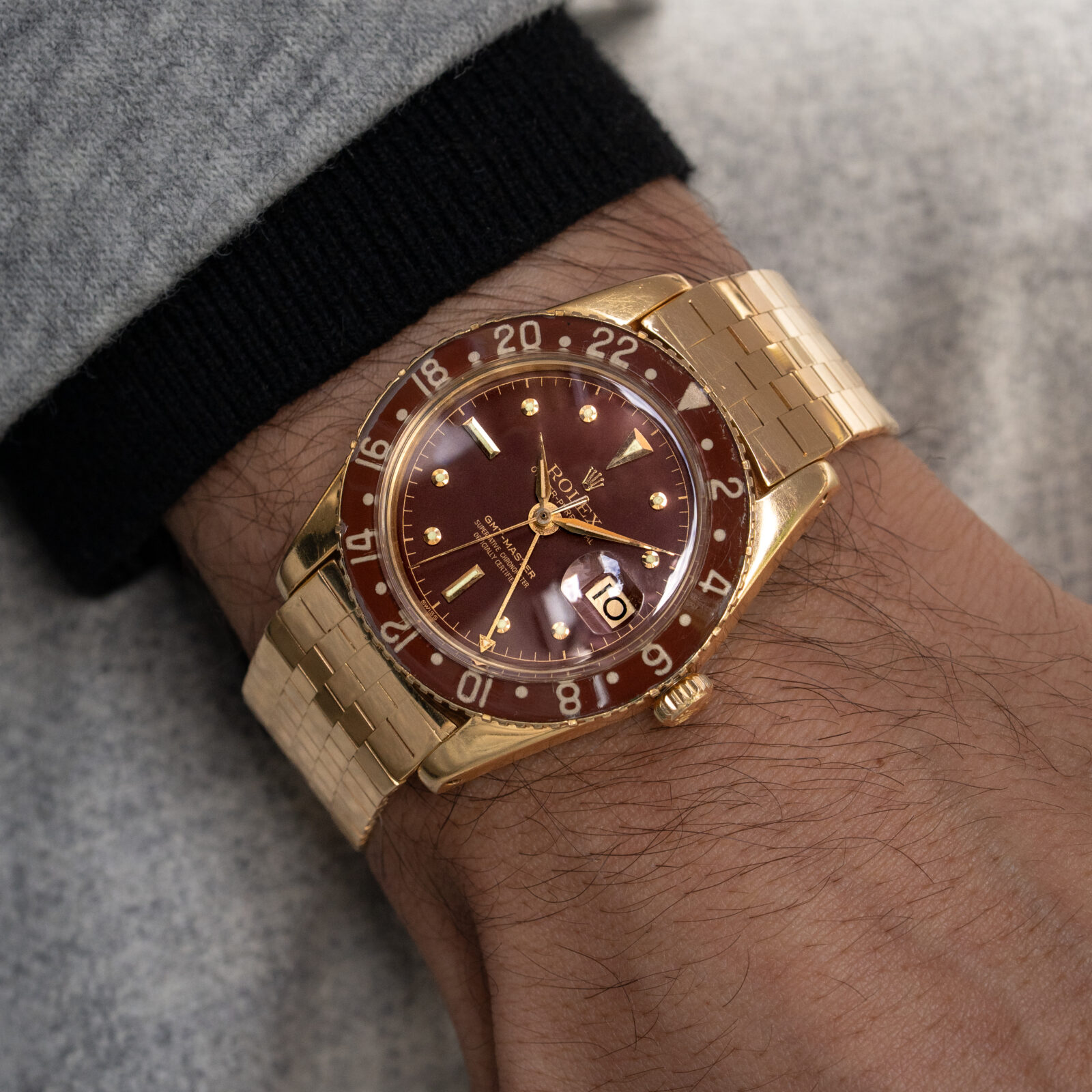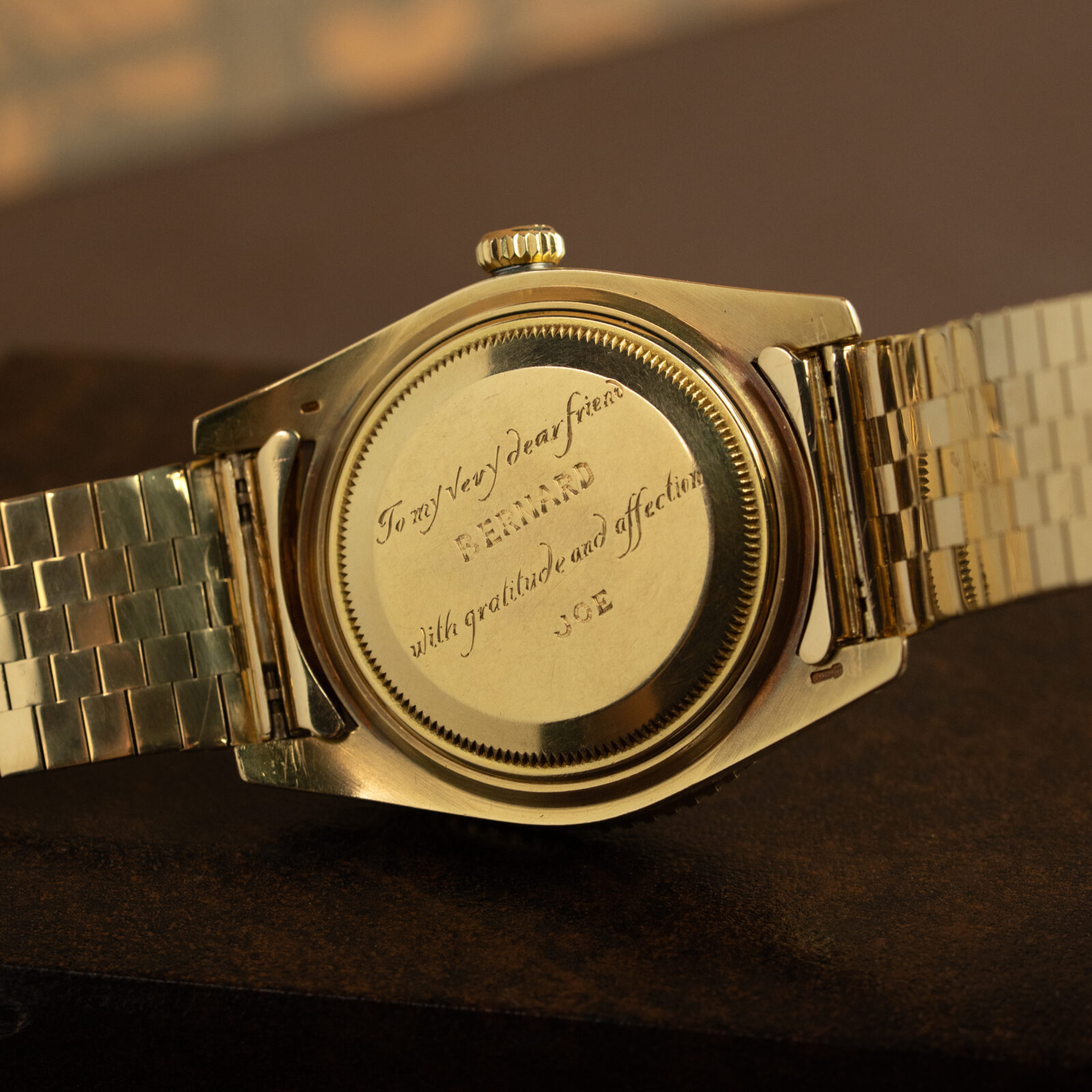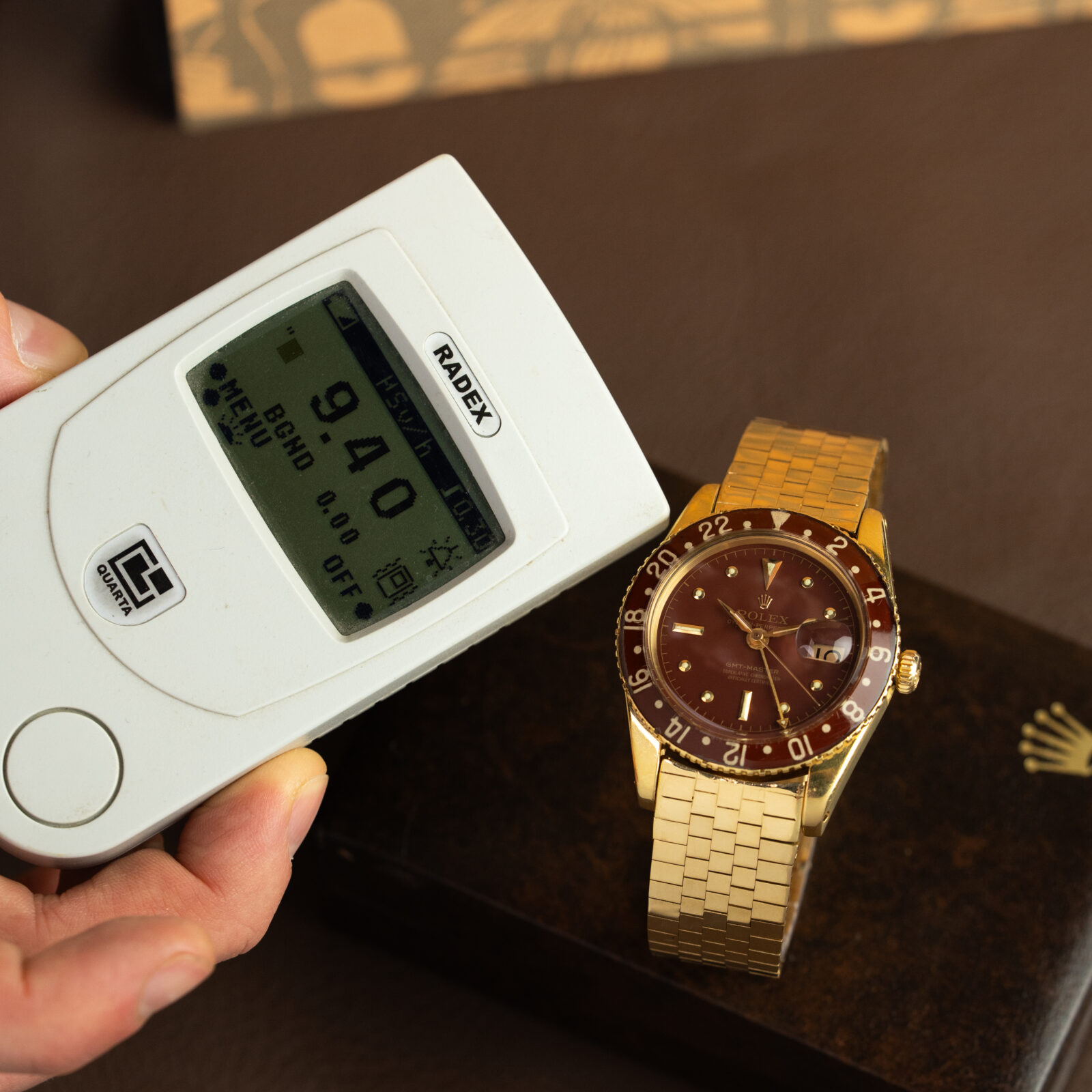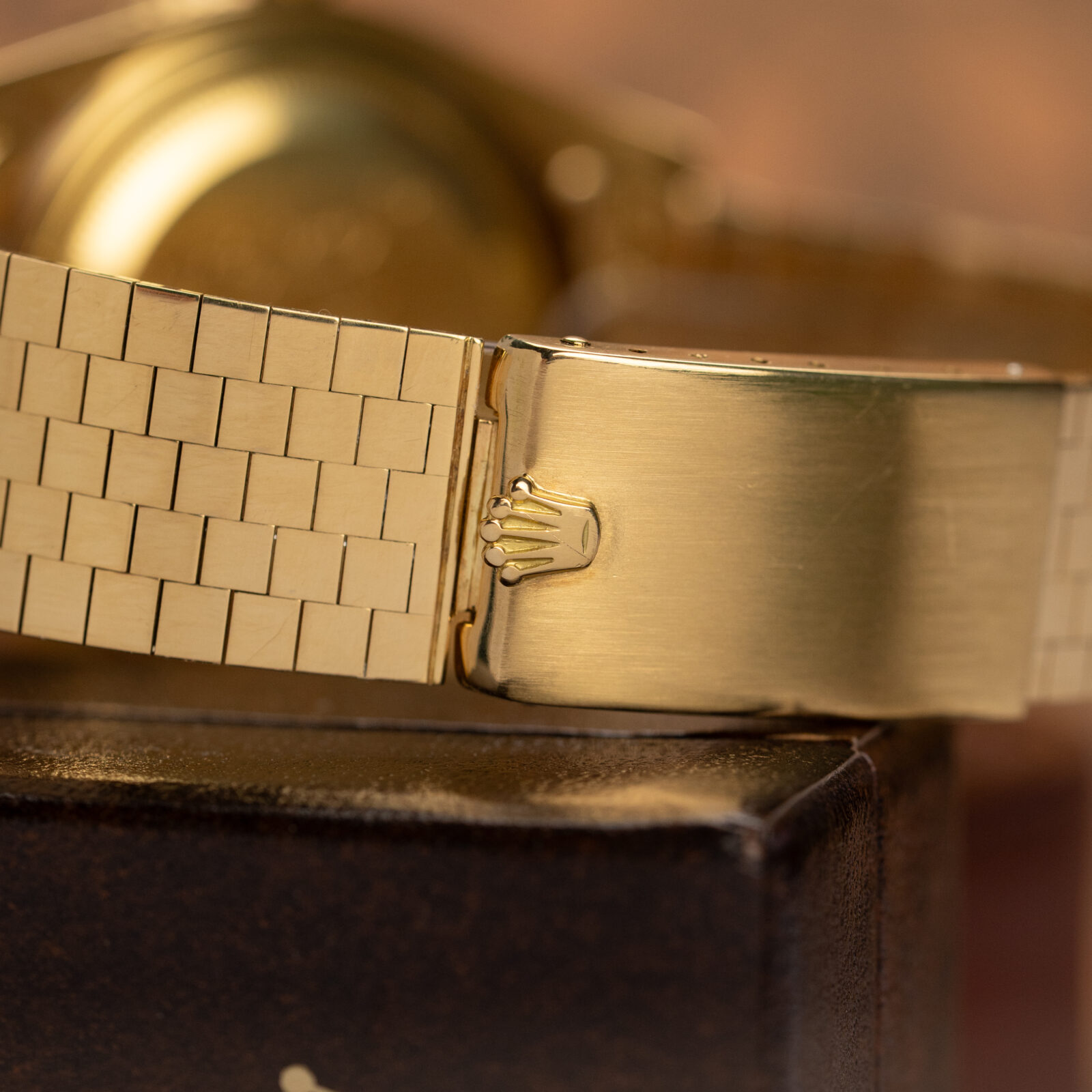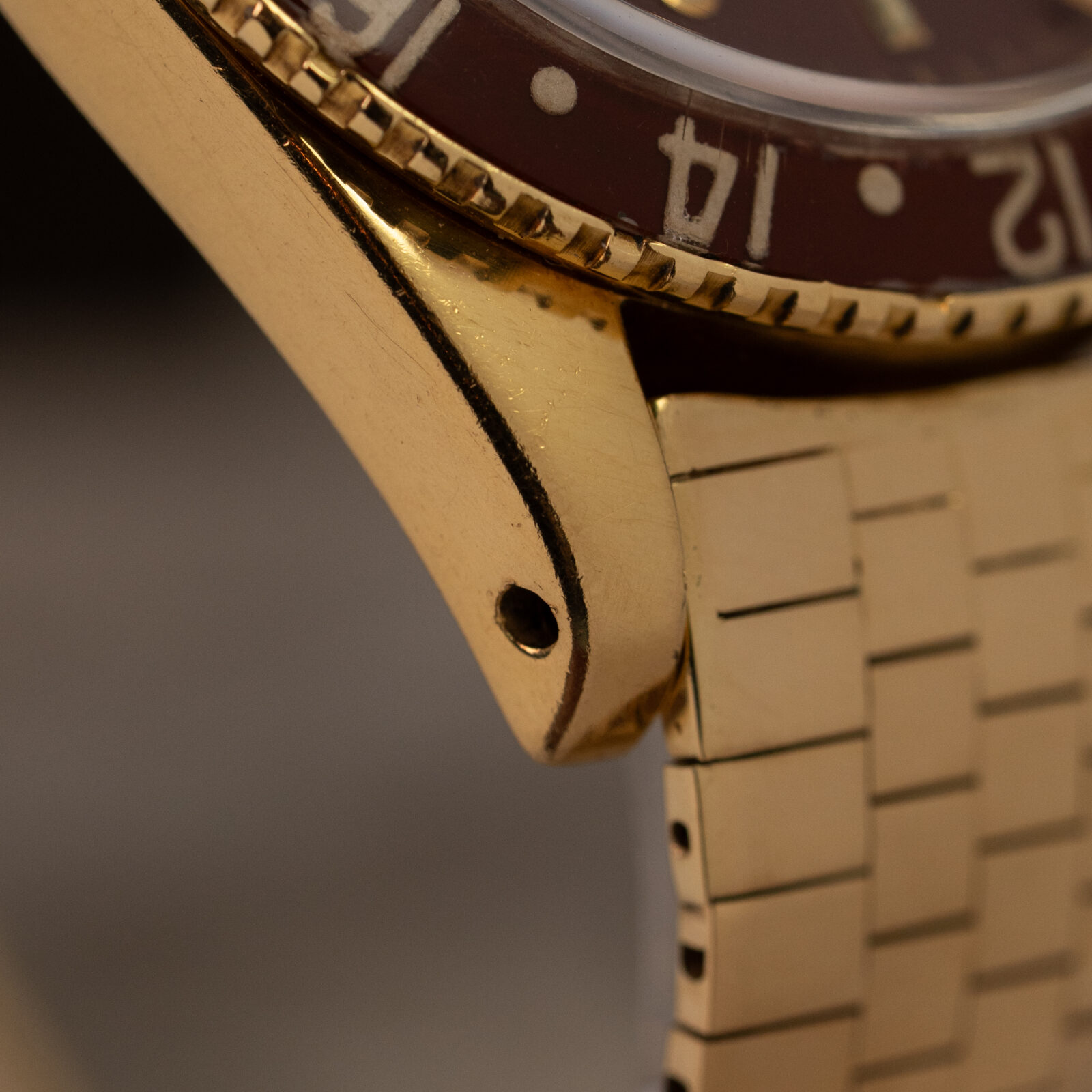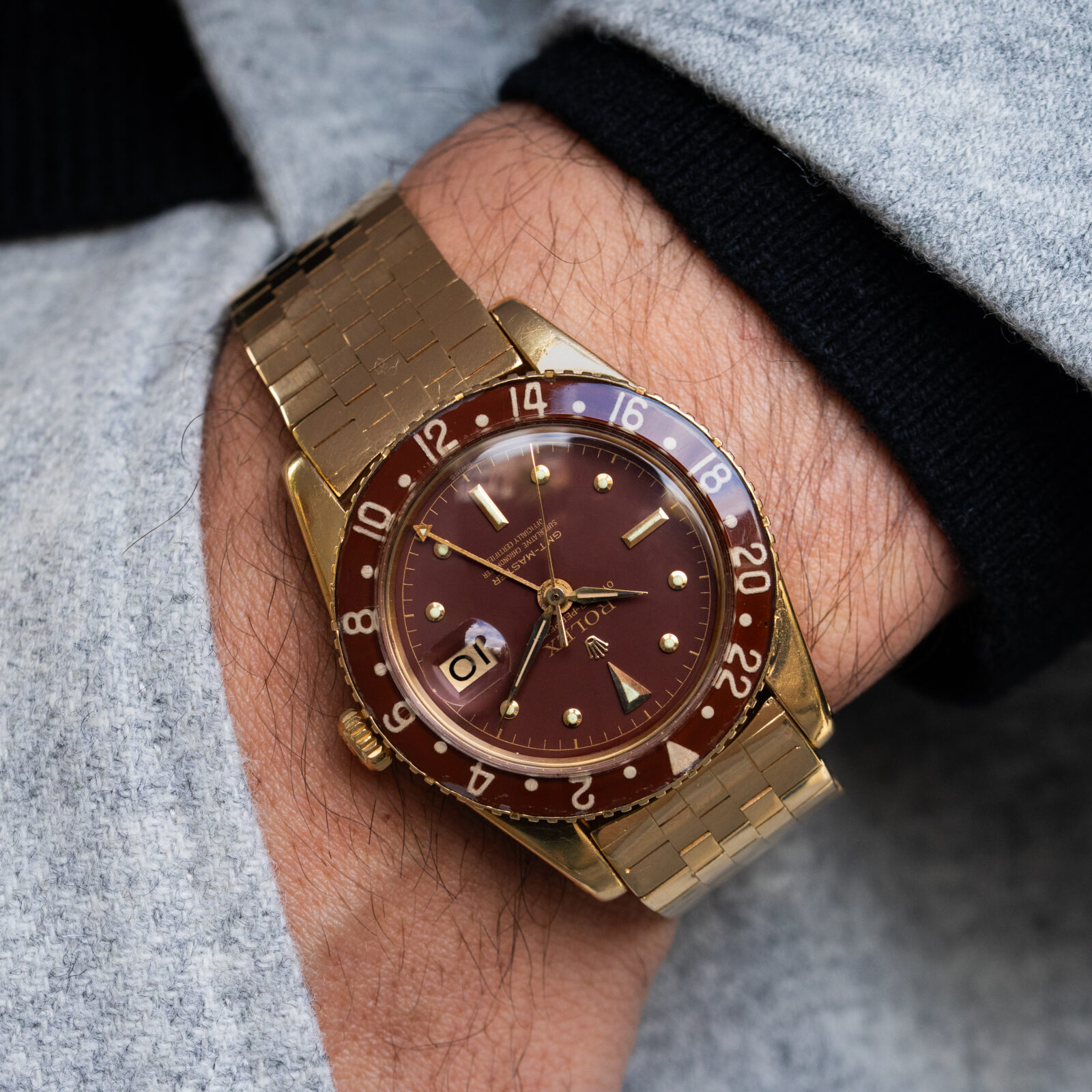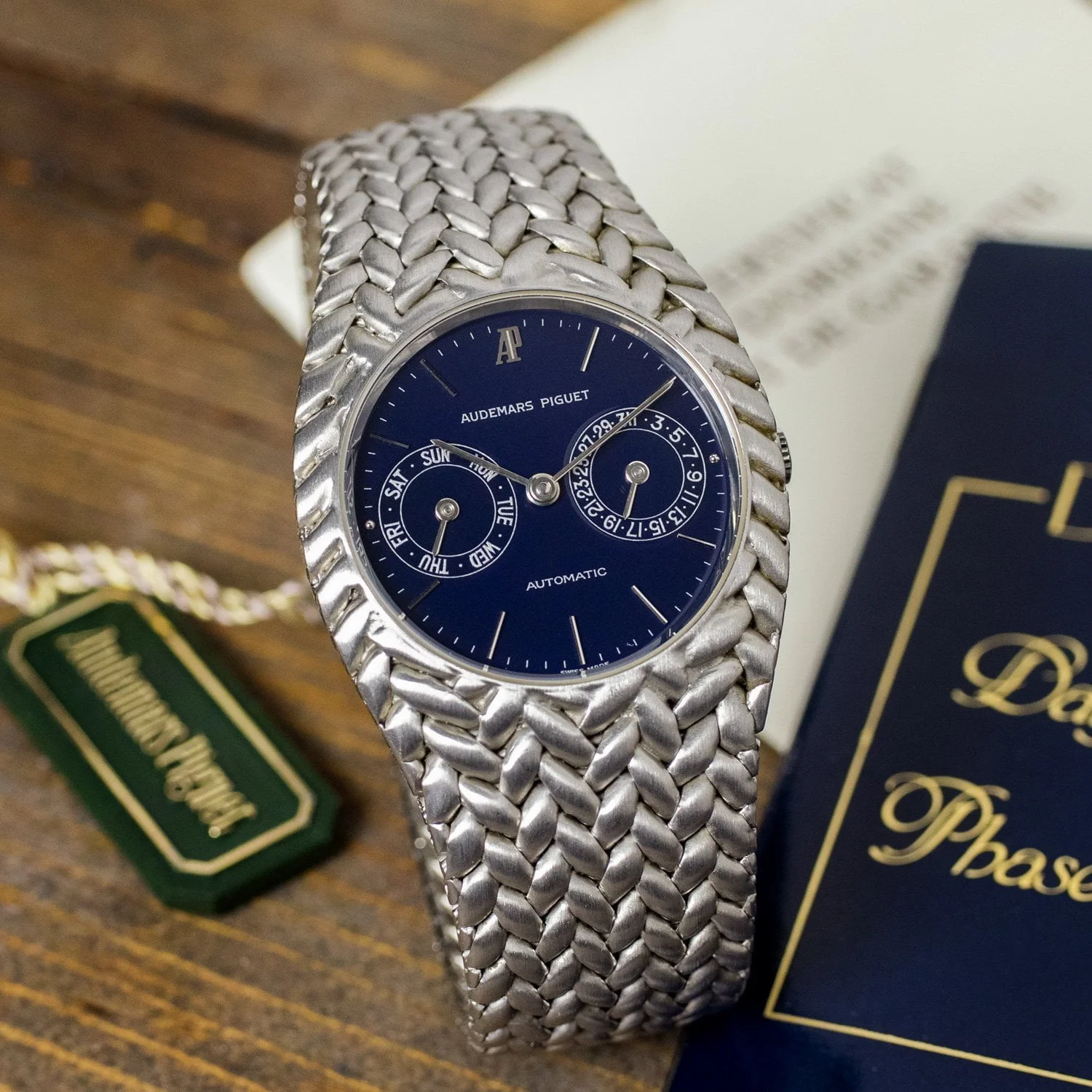

18k yellow gold with original and well preserved bakelite inlay
6542
Yellow gold, bakelite, Strontium 90 and Radium - the ingredients for one of the rarest tool watches Rolex' history has to offer: 6542/8.
In the late 1950s, as the world began to shrink under the wings of commercial aviation, Rolex created a watch that would quietly redefine how time was experienced across continents. The GMT-Master was conceived for pilots and navigators, but in its yellow gold reference 6542/8, it transcended its professional origins and became something altogether rarer; a watch that bridged the discipline of engineering with the elegance of travel itself.
Crafted entirely in 18-carat yellow gold, the 6542/8 was the most refined expression of Rolex’s new dual time-zone instrument. Its brown lacquered dial, glossy and deep, was punctuated by raised gilt inscriptions and “nipple” hour markers. The bezel, produced in fragile yet beautiful bakelite, offered the 24-hour scale that defined the GMT line, rendered here in tones that provides a harmony with the warmth of the case. For that extra flavor; an original brick bracelet in matching metal was added.
Production of the reference was short, lasting only a few years. Many were lost, altered, or stripped of their delicate bakelite bezels. To find a surviving example today is to encounter not simply a vintage Rolex, but an artifact of a time when the company’s ambition was defined by craftsmanship rather than scale. The 6542/8 stands as a reminder that early Rolex design was capable of immense subtlety, yet still displayed opulence.
The engraving on the caseback, rendered in two charmingly distinct fonts, lends the watch a touch of personal romance. Whoever Joe was, he clearly held Bernard in high regard; gifting him an object of such value and thoughtfulness. Bernard, in turn, cared for it with remarkable devotion. The watch has survived in exceptional condition, retaining its original bakelite bezel, free from any notable damage. The lacquered dial remains beautifully preserved, its surface untouched by time, and the original hands perfectly match the warm tone of the radium-filled hour markers.
This was the age of the jet-set diplomat, of Pan Am’s Clipper service, of time becoming both a tool and a luxury. A gold GMT was not for the cockpit alone; it was for the man who navigated between worlds, whose days began in London and ended in Havana, or New York. Every element of its construction speaks to a purpose that was both practical and poetic: to bring order to a world newly in motion.
